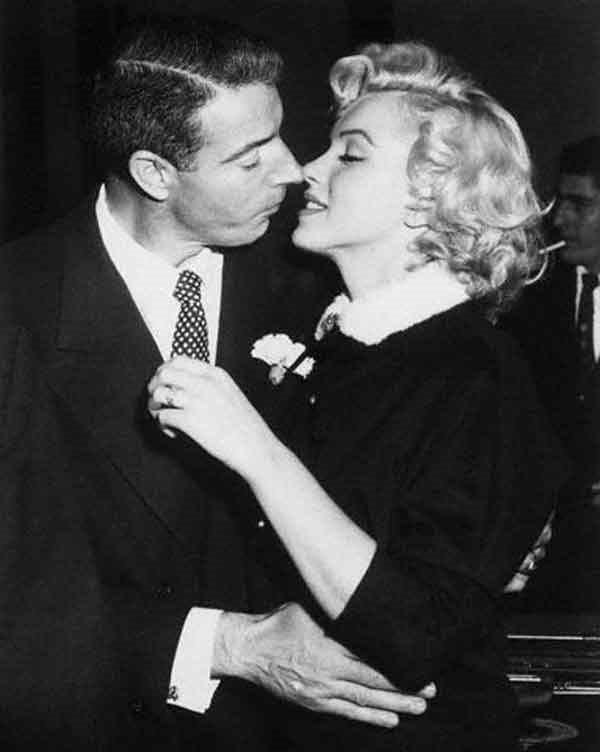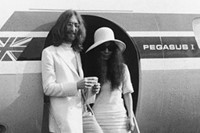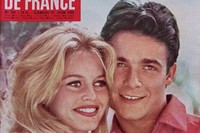Tomorrow’s Royal Wedding will, by default, see the first outing of a dress that will be re-examined for years to come, significant for what it represents in British history.
Tomorrow’s Royal Wedding will, by default, see the first outing of a dress that will be re-examined for years to come, significant for what it represents in British history. This wedding-inspired Vintage Style column explores the wedding dresses of three style icons that are symbolic for three very different reasons. The wedding outfits of Yoko Ono, Marilyn Monroe, and Brigitte Bardot have been chosen because of their significance within the context of the wearer’s own work, the change it represented in fashion history, and for what it came to represent within the wearer’s own tragic romantic life.
Art Exploration: Yoko Ono
Like no wedding outfit that had come before, the sculptural white tiered mini dress, knee socks, wide brimmed hat and bug-eyed glasses worn by Yoko Ono for her 1969 marriage to John Lennon was symptomatic of the experimental era’s challenging of traditional ideas. The happy couple, both long-haired, dark-eyed and dressed all in white, resembled bandits, prompting Zsa Zsa Gabor to describe them as looking like “two people going to hold up a bank”. Yoko Ono’s exploration of the symbolism of the wedding dress goes far deeper than this one occasion. In her famous Cut performance, a piece she first performed in 1964, Ono invites audience members to cut away at her best clothes until she is naked, reportedly, on occasion this has been silk white wedding dress. Falling into the Fluxus art movment, the performance aimed to provoke ideas rather than produce a product, as the audience members become both the voyeurs and aggressors.
Doomed Love: Marilyn Monroe’s tragic love affair with Joe DiMaggio
In jarring contrast to her hypersexual on-screen image, Marilyn Monroe’s low-key marriage in 1954 to baseball star Joe DiMaggio reflected the genuine affection the couple shared. She wore an elegant chocolate brown broadcloth pencil dress and jacket, featuring a white ermine Peter Pan style collar. The marriage lasted less than a year but, despite spending several years married to playwright Arthur Miller, it was rumoured Monroe and DiMaggio never fell out of love and were to remarry on 8 August, 1962, which sadly turned out to be the date of her funeral. DiMaggio took charge of funeral arrangements and made sure fresh roses were delivered to Monroe’s grave every two weeks. He never remarried and never gave an interview about Monroe. Her wedding ensemble was sold to a private American buyer at a Sotheby’s auction in 1998, for $33350. The ring was also auctioned and was, perhaps surprisingly, one of the only glitzy pieces of fine jewellery in Monroe’s entire estate. The 35-diamond eternity band was missing a baguette diamond, symbolising the unfulfilled promise of the pair’s love.
Fashion Shift: Brigitte Bardot
When Brigitte Bardot donned a pink gingham checked dress to her 1959 wedding to actor Jacques Charrier, it marked a notable shift in the fashion status quo. Although it did help the popularity of the designer Jacque Estral greatly, it coincided with, “the decline in the hold of couture over the fashion business,” according to film historian Ginette Vincendeau. As youth culture celebrities began to popularise styles instead of designers, looks were highly copied. The August 1959 issue of Life magazine reads, “One of Paris’ biggest stores is selling 8,000 Bardot Kerchiefs a month and 3,500 gingham dresses like the one Bardot wore at her Wedding. Said a Visiting U.S. fashion editor, “You can’t buy a yard of checked gingham in Paris, not even for kitchen curtains, since Brigitte picked the fabric.””
Text by Laura Havlin



